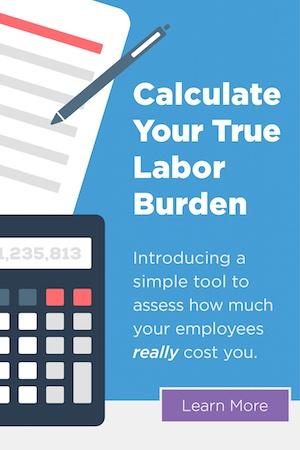What kind of stats do you need to measure your employees’ abilities? What is enough? And how do you apply them when looking for new talent?
Those who’ve seen the movie Moneyball know the devil’s out there, somewhere, in the data. Most businesses, however, don’t track their employees as if they were baseball players, nor could they if they tried.
It’s understandable. Performance management is notoriously difficult, so hard that many companies pay it plenty of lip service — even putting systems in place — while entirely avoiding it in practice, according to Kris Dunn, chief human resources officer at Kinetix, a recruitment firm.
Dunn thinks faulty performance data is one of the biggest bottlenecks in the way HR departments use information to find talent.
“It’s that missing layer which tells you it’s garbage in-garbage out in the type of judgments data can help you make toward hiring decisions,” Dunn said when we sat down with him for an interview last month. “If you don’t objectively know what an individual’s performance was [in an existing position], you can’t really get honed in on the candidate in front of you.”
He has a point. Hiring the right people means knowing what makes your most successful ones tick. One of the few surefire ways to predict whether a candidate’s past experiences will make them successful is to have accurate performance data on the people who’ve previously filled the role.
If only it were so easy.
4 Steps for Better Performance Management
Using systems that track time or having employees do it themselves is a good way of telling how long they’re working. Cataloguing their successes can tell you who your top performers are.
RELATED: Garry On: The People Who Make Entrepreneurs Great
Between how long they work and how much they succeed, however, are telling behaviors that may separate a talented employee who may not work as much from a less efficient one that puts in more time.
Wouldn’t you love to know what sets them apart?
We’ve tapped our knowledge and come up with 4 steps that will help you start measuring the things that will help you determine if a new candidate should become your next hire:
- Acknowledge your blind spots. If you can’t point to numbers that say why someone performs well in a position, you probably don’t know what to look for in a candidate – even if you think you do. If you do have performance statistics, ask whether they truly relate to job success. If the performance of two employees with similar numbers is vastly different, you’re probably measuring the wrong thing.
- Measure not just success, but what leads to it. It’s great to know, for example, how many times your best salespeople close in a quarter, but knowing how many runs you need to win does little toward scoring them. On the other hand, if you know that all your best salespeople make at least 20 calls per day, that’s something you can vet for in a candidate.
- Track smartly. Not every activity is worth keeping tabs on, and many that are don’t fit into standard boxes, such as time or sales. Find ways to measure the things that matter. Keep your system quick and simple, and don’t try to track too much or risk ending up with inexact measurements and hurting your staff’s productivity in the meantime.
- Use your insights in hiring. Why go through all the trouble of measuring how your top performers achieve success if you’re just going to hire your friend’s nephew as a favor? Sure, he may turn out to be great, but the smart move is first to see whether the shoe fits before taking it for a run.
RELATED: Effective Job Descriptions Keep Employees Great, Too
More Than One Way To Bake, Peel, Skin, etc.
Let’s say you’ve identified what your top performers do to succeed, started to measure it, and you’re hiring based on candidates’ ability to do what’s needed. But now you’ve got a candidate that doesn’t quite fit, and yet you have a gut feeling they will be successful anyway.
It’s a gamble, of course, but rolling the dice every so often helps keep things fresh. They may not quite fit into the mold you’ve carved for them, but perhaps they’ll reach success in a different way; then you’ll have something entirely new to measure for.
Without that leeway, your own system could stifle your company’s potential rather than help fulfill it.
Hiring Still an Art, Getting Science-y
Like the baseball scouts of old, most companies still use multiple hiring managers over long stretches of time, each with her own idea of what makes a suitable candidate. Great performance data can help take what’s been for ages an art form and help move it toward a science.
Actionable data must clear and thorough. It’s easy to see what you want in a poorly constructed data set, and the assumptions you make about it are likely no better than going with your gut.
The day performance management catches up with the rest of the data revolution, hiring managers will strike out less and hit far more home runs.
Kris Dunn is the CHRO of Kinetix, an American RPO recruiting firm, author ofHRCapitalist.com, a recruiting blog, and founder of Fistful of Talent, a community blog for recruiters and HR professionals alike. Follow him on Twitter @kris_dunn.
If you found this article helpful, may we suggest:
 For more on the state of right-fit assessment technologies, read The New Science of Hiring (From Inc. Magazine).
For more on the state of right-fit assessment technologies, read The New Science of Hiring (From Inc. Magazine). For more on things to change about your hiring process, read How ‘Cool’ Perks Land Business Owners in Hot Water.
For more on things to change about your hiring process, read How ‘Cool’ Perks Land Business Owners in Hot Water. For more on addressing your HR woes, read 7 Human Resource Management Goals for Your Small Business.
For more on addressing your HR woes, read 7 Human Resource Management Goals for Your Small Business.


